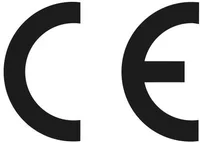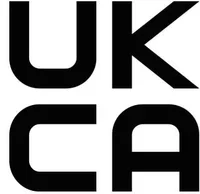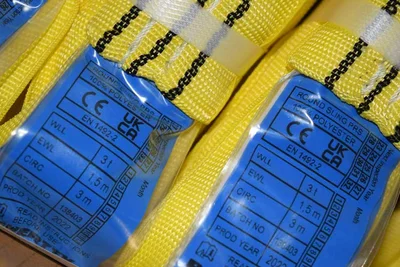CE and UKCA marking
What Do They Mean?

CE marking is a European standardized mark that is mandatory for many products sold within the European market. It was introduced to establish a unified technical and legislative framework for trade across the European Economic Area (EEA), which includes EU countries along with Norway, Iceland, and Liechtenstein.
CE marking
|
The CE mark signifies that the manufacturer has declared the product's compliance with relevant EU directives and conformity standards. This means that even if a product is manufactured outside the EU, it can still carry the CE mark if it meets these standards. A CE-marked product adheres to the EU's requirements for safety, health, and environmental protection. CE marking applies to a broad range of products, including electronics, medical devices, toys, construction materials, machinery, and lifting equipment. It is illegal to affix a CE mark to a product that does not meet the applicable directives for its product type. |
 |
UKCA marking
|
UKCA Marking UKCA marking was introduced in the UK after Brexit, as the CE marking is being phased out over time. The UKCA mark (United Kingdom Conformity Assessed) is now required for many products sold in Great Britain and Wales. This marking indicates that the product complies with the UK's technical standards and regulations as defined by the UK market. |
 |
The Difference Between CE and UKCA marking on POWERTEX roundslings
The main differences between CE and UKCA marking lie in their geographic validity and the technical standards they represent:
|
 |
A product can be both CE-marked and UKCA-marked if it is sold in both the EU and the UK. This dual marking is applicable to all our CE-marked POWERTEX products, for instance.
To obtain UKCA marking, manufacturers must ensure that their products meet the applicable UK technical standards and have them certified by a UK-accredited body.
Do you wish to know more about our Lifting KnowHow? Please reach out.
For faster response, call us directly at +47 66 79 95 00!
Meanings of WLL, SWL and MBLLearn about the different meanings surrounding WLL, SWL and MBL. |
Learn more |
What does EWL mean?Learn about Effective Work Length. |
Learn more |
What is r-PET?Learn about products made of recycled plastic. |
Learn more |
What is RFID?Learn about RFID and what it's used for. |
Learn more |
What is Steel Grades?Learn about the different steel grades for lifting equipment. |
Learn more |
Why CE and UKCA marking?Learn about the usage of CE and UKCA markings. |
Learn more |


